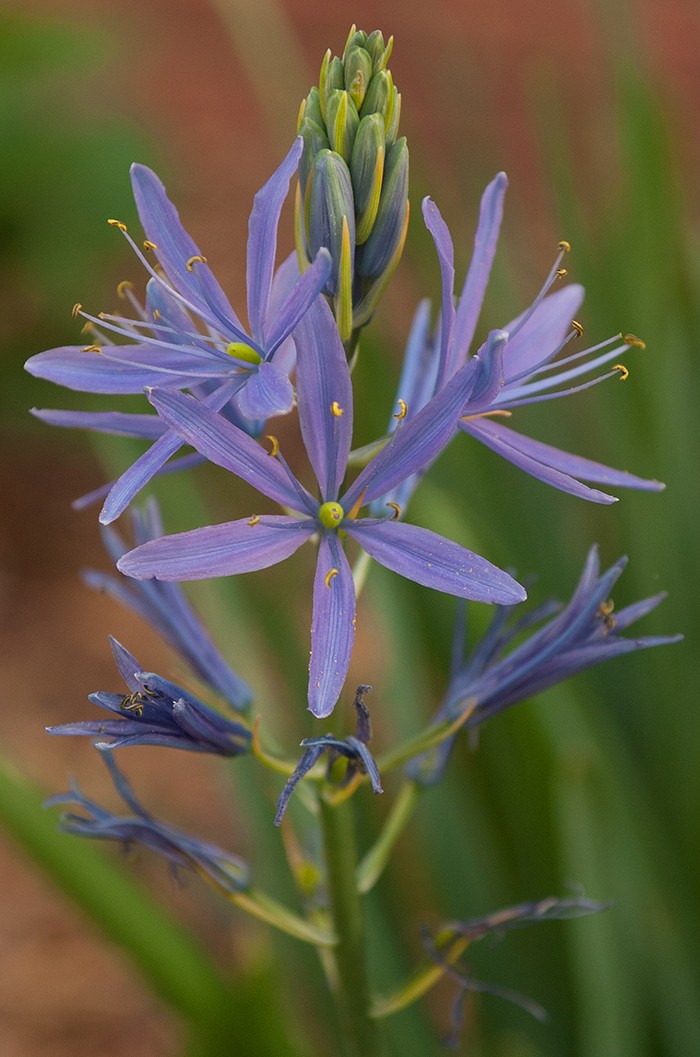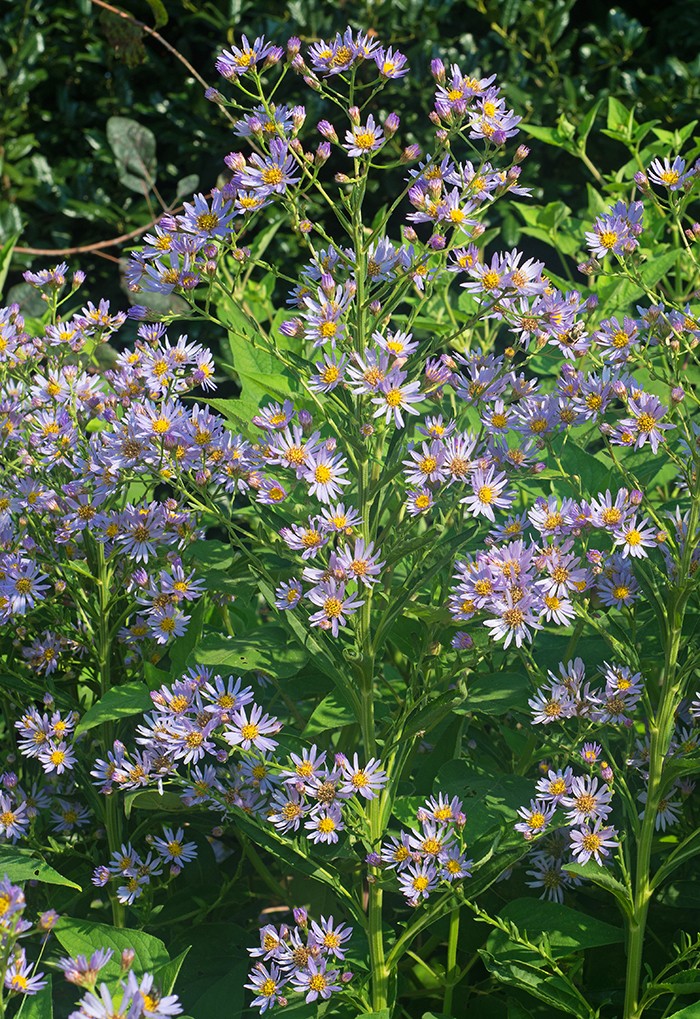Hark! Exalt in autumn’s advent! That telling time of summer’s weary green languor prostrating itself to this newest, resplendent season, verily flamboyant by its known glowings — falling leaves bejeweled: imperial reds, Midas golds, opulent oranges…
Um, excuse me while I slap myself back into more useful prose.
There’s nothing wrong with the idea behind my very shaky Shakespearean-ish sentiment saluting the coming visual treat of autumn’s bright colors, mind you, but, quite frankly, I do like breaking up the usual flame-fest at this time of year in the garden with plants donning flowers reflecting subtler shinings from the blue end of the spectrum. Such alt-showoffs in the fall are uncommon, but one tardy bloomer capable of calming down a fiery autumn day is the tatarian aster (Aster tataricus).
Brought to the States from Central Asia and Japan, the tatarian aster is one of the latest blooming asters, waiting until early fall to launch its galaxy of 1-inch, light purple to bluish stars with sun yellow centers. These flowers are not only pretty, but pretty persistent, lasting for weeks. They are also welcomed fly-ins for bees and butterflies still on the wing as the growing season closes down.
For gardeners faint of heart or lacking in space, know that this herbaceous, strong-stemmed perennial can tower to over 8 feet tall, meaning it is a biggie best tucked away in the back of an ornamental bed.
If your garden can’t accommodate such a Texas-sized plant, give the cultivar ‘Jindai’ a look. Only topping out at around 4 to 5 feet in height, this popular compact pick still packs as much attractive punch in bloom production as its tall cousin.
Mainly because of its more manageable size, ‘Jindai’ is the tatarian aster you will most likely see for sale — and in full flowering flaunt — at local nurseries this time of year. Available stocks will vary, so let your fingers do the walking by calling favorite garden centers first. If you want at least one lead, for the last few falls I have seen it at the Farmers’ Market in Raleigh.
Tatarian aster is a toughie that can grow in most types of soils, but it will perform better in rich garden dirt. Also, for flower shows your neighbors will talk about, give this aster as much sun as possible.
A happy tatarian aster will spread by way of rhizomes underground — sometimes to the point of overstepping its allotted space, so think about dividing it every two or three years in the spring to keep its wandering ways in check.

Camassia
If the cool hues of tatarian aster have caught your discerning eye, consider repeating this visual treat early next growing season with the spring-flowering pretty known as camassia, a fall-planted bulb that will grace the garden with starry, bluish-purple blooms to counter the typical flashy shows put on by tulips and daffodils.
Camassia is an easy online find, with ‘Blue Danube’ and ‘Caerulea’ being popular cultivar picks. The bulbs are best planted later this month or early November in a site with well-worked garden soil that has some filtered shade in the afternoon. In a suitable setting, camassia, which is native to North America, will naturalize and spread. And, as a bonus, the pretty flowers and strap-like leaves are deer-resistant.
To Do in the Garden
October
- Have a shrub or small tree that is not parked where you want it to be in your landscape? Now is a good time to prep it for a proper move late this coming winter by root pruning to make the transition easier on the plant and planter (you) early next year.
- How do you root prune? First, stick a shovel fully into the ground at the plant’s dripline, which is the furthest point the leaf canopy extends outward from the trunk. Then, using the dripline as a rough template, continue this ground gouging until you have completed a cut circle around the plant’s root zone.
- While cutting back herbaceous perennials as the first frosts start nipping at their leaves, don’t be so quick to whack away at the plumes of ornamental grasses. These fluffy tufts can not only survive the coming chill to add their special beauty in the winter garden, but they can also accentuate indoor arrangements during the coldest months.
- To help prevent black spot and other soil-borne diseases from giving your roses cases of the uglies next year, rake up and trash summer mulch and debris from under the plants, and replace with a fresh round of mulch for the winter.
- Before really cold weather starts to settle in for the next few months, set hardy aquatic plants deeper into the water garden and remove tender tropicals.
- Take a Bough
- Discover Hillcrest
- Going Through a Phrase
- A Cut Above
- Dive into Adventure at the Greensboro Science Center
- Nonprofit Spotlight: Team Drea
- Worth the Drive: On the Square in Tarboro
- Key Lime Gose from Durty Bull Brewing Company
- Port Cask Finished Virginia-Highland Whisky from the Virginia Distillery Co.
- Home Tour: Light and Bright
- Small Business Spotlight: City Garden Design
- Garden Adventurer: It’s Tatarian Aster Time!
- From the Editor: October 2019







